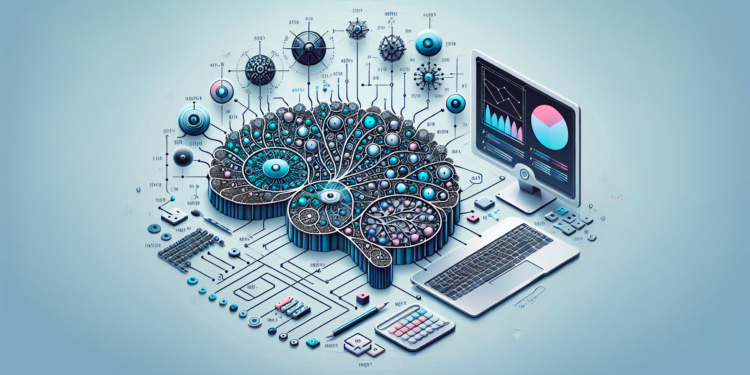Backpropagation, or backward propagation, revolutionizes the training of neural networks through weight optimization. Historically marking its onset in the 1970s, the underlying theory stems from the Widrow-Hoff delta rule, which adjusts weights to minimize the difference between the network’s output and the expected signal. Backpropagation generalizes this principle to multiple layers of a neural architecture.
Mathematically, the algorithm uses the gradient of the loss function with respect to the weights W, denoted by ∇WJ(W), where J(W) represents the cost function. Through gradient descent, backpropagation conducts an iterative search for the minima of J, that is, adjustments in W that reduce the prediction-truth error in the training set.
Innovation in Algorithms
In current practice, progress has advanced beyond the basic stochastic gradient algorithm to methods that accelerate convergence or are less susceptible to getting trapped in local minima. Innovations like RMSprop and Adam (Adaptive Moment Estimation) incorporate elements such as adaptive learning rates and momentum to tackle challenges in weight optimization.
Advancements in Deep Neural Networks
With the proliferation of computational capacities and the availability of large volumes of data, deep neural networks now collaborate across a broad range of applications, from visual recognition to natural language processing. A notable example is the Transformer architecture used in language models like GPT-3, whose backpropagation is complicated due to the scale and inherent complexity of such a model.
Challenges and Overcoming Risks
An intrinsic challenge of backpropagation is manifested in what is known as the vanishing/exploding gradient problem. Weight initialization techniques, such as those by He or Xavier, the use of nonsaturating activation functions like ReLU, and batch normalization have emerged as partial solutions to mitigate this complication.
Case Studies: Application in Emerging Fields
In emerging areas such as generative adversarial networks (GANs), backpropagation plays a dominant role. A particularly notable case study involves its use in the generation of synthetic images or in the enhancement of super-resolution. The precise tuning of weights through feedback between the generator and the discriminator highlights the relevance of backpropagation in this dynamic context.
Still, while backpropagation has proven effective, the scientific community continues to explore alternatives such as evolutionary differential deep learning, which could lead to an eventual overcoming of some inherent limitations of the standard methodology.
Future Directions and Potential Innovations
Future perspectives in the development of backpropagation algorithms lean toward automatic optimization and metaheuristic learning. Neural networks like AutoML are emerging, where the selection of hyperparameters and network structures are optimized as part of the learning process.
Analyzing the nature of the error surface and the visualization of high-dimensional spaces to understand the dynamics of weight optimization can also offer new perspectives and theories with the potential to break current barriers in the efficiency of neural network training.
Sensorimotor integration inspired by the neurobiological process of synaptic plasticity, where the algorithm dynamically adjusts to new data patterns, promises to inspire substantial innovations, proposing a model of backpropagation not just as a weight adjustment mechanism, but as an adaptive function of continuous recalibration.
In conclusion, the focused admiration for backpropagation justifies the emphasis placed on its study and continuous improvement. Understanding its theory and the ingenuity applied to its underlying challenges will continue to be crucial as we seek the frontiers of the possible in artificial intelligence.






















